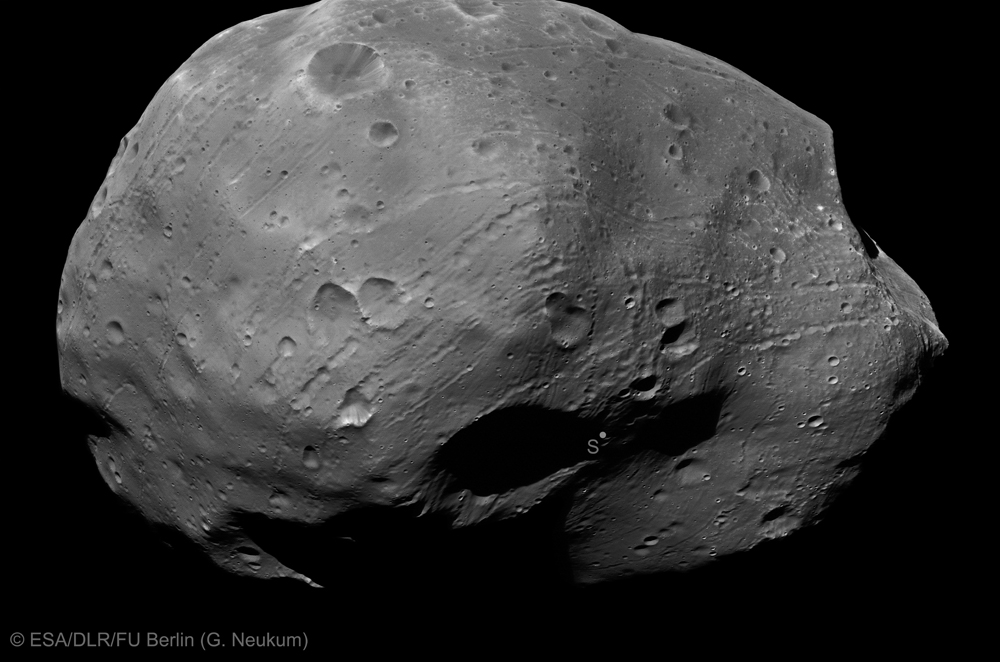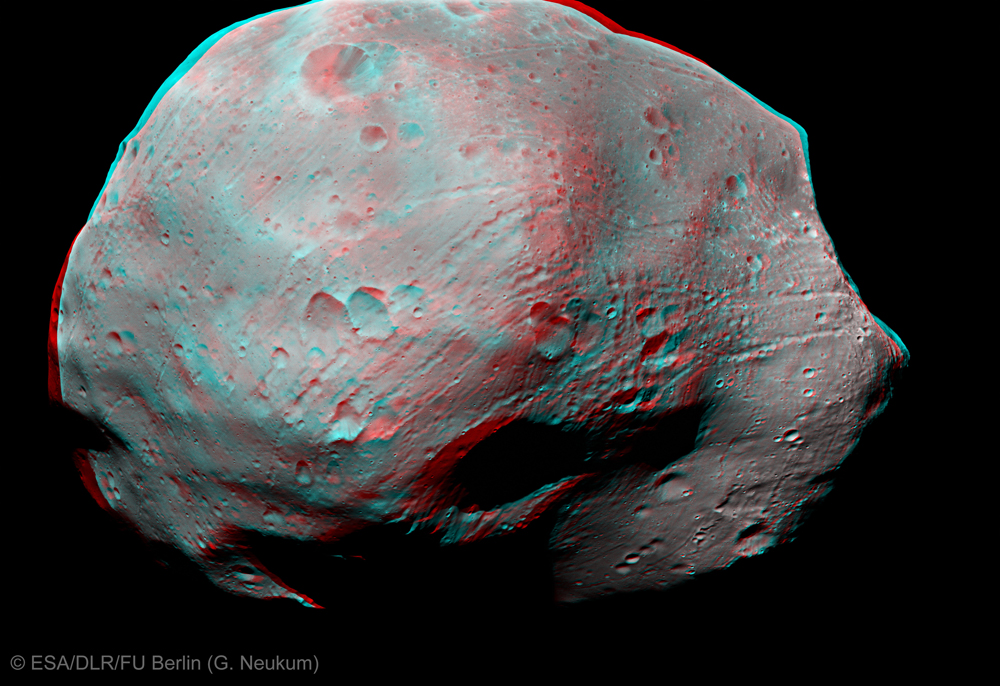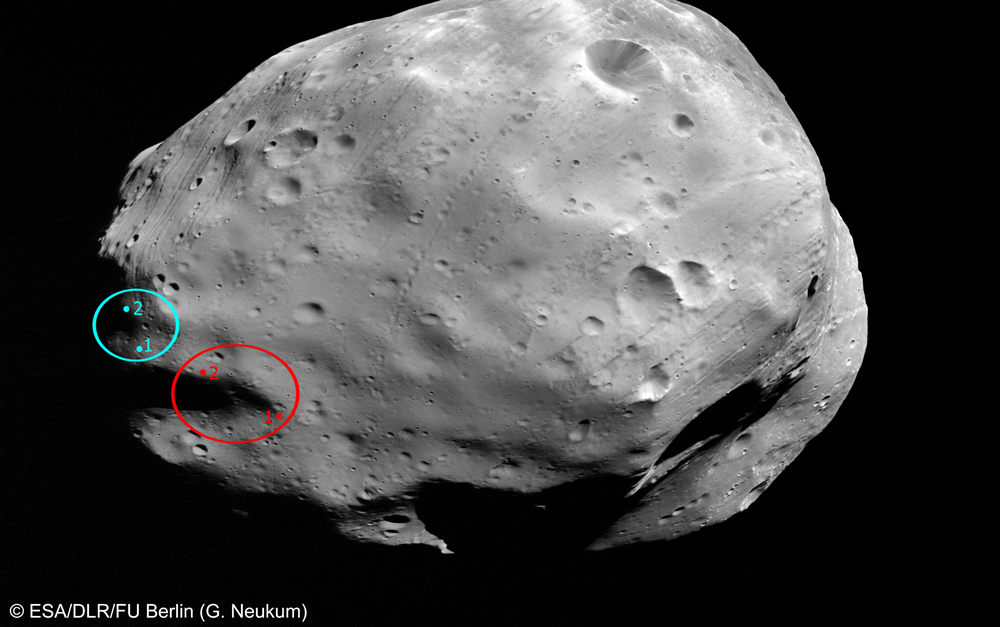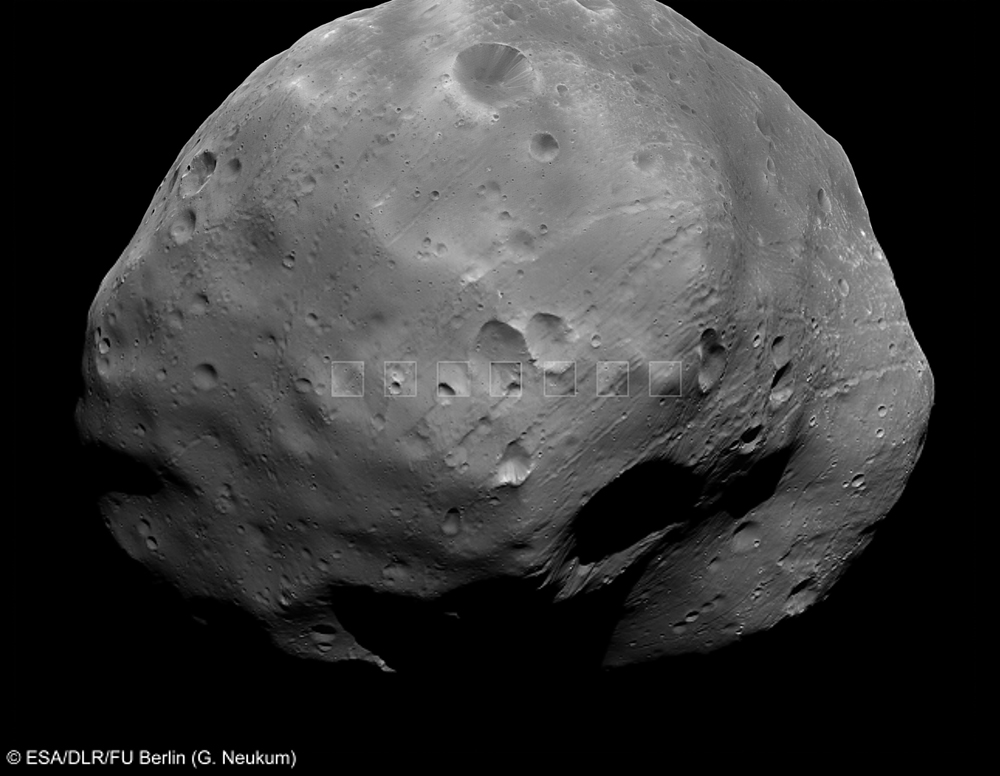New Photos: Mars' Biggest Moon Phobos Up Close

Mars' largest moon is an oblong cratered rock named after the Greek god of fear.
Yet the frightful moon Phobos is hiding fewer secrets after a recent close flyby from the European spacecraft Mars Express.
The European Space Agency's probe passed within 62 miles (100 kilometers) of the Martian moon Jan. 9.
The encounter produced a collection of new photographs that reveal the satellite's pockmarked surface, including a possible landing site for a planned Russian sample-return mission to the moon. While Mars Express snapped the photos on Jan. 9, the probe had to wait until completing a suite of other observations before beaming the Phobos views back to Earth, ESA officials said.
Phobos is one of two moons orbiting around the Red Planet; the other is Deimos (meaning "dread" in Greek).
There is some controversy over how the moons formed, but one idea is that they were born when a comet or asteroid slammed into Mars and rubble debris from the collision condensed into the moons.
Phobos will be the site of the planned Russian Phobos-Grunt mission, which will launch late this year or early 2012, and will send an unmanned lander to touch down on the surface of Phobos, collect a sample of dirt, and return it to Earth.
Get the Space.com Newsletter
Breaking space news, the latest updates on rocket launches, skywatching events and more!
The mission aims to study Phobos' geology and origin, and will search for signs of possible past or present microbial life on the moon.
Here's a look at the latest close-up photos of Phobos:




Mars Express launched in June 2003 and entered orbit around Mars in December 2003. It is scheduled to operate until at least the end of 2012.
Join our Space Forums to keep talking space on the latest missions, night sky and more! And if you have a news tip, correction or comment, let us know at: community@space.com.

Clara Moskowitz is a science and space writer who joined the Space.com team in 2008 and served as Assistant Managing Editor from 2011 to 2013. Clara has a bachelor's degree in astronomy and physics from Wesleyan University, and a graduate certificate in science writing from the University of California, Santa Cruz. She covers everything from astronomy to human spaceflight and once aced a NASTAR suborbital spaceflight training program for space missions. Clara is currently Associate Editor of Scientific American. To see her latest project is, follow Clara on Twitter.









